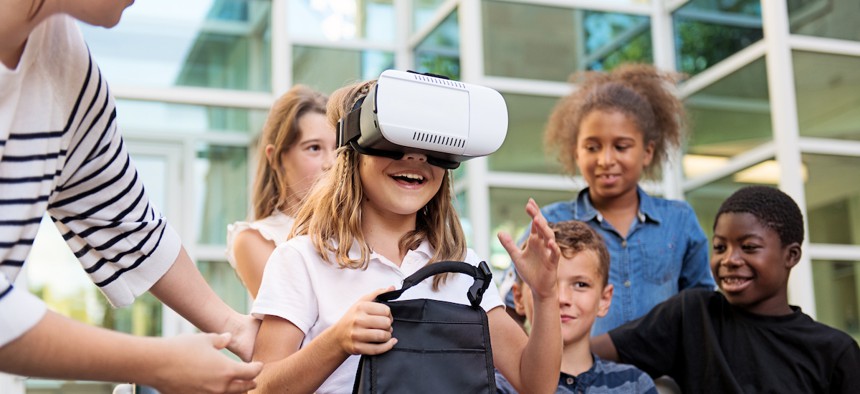Schools turn to VR to develop a ‘future-ready’ neurodivergent workforce

lisegagne via Getty Images
The tech can help neurodiverse students prepare for entering the workforce amid government programs aimed at fostering more inclusive workplaces, experts say.
For the past two decades, experts have tracked an increase in the prevalence of autism spectrum disorder, with federal data released earlier this week showing an estimated 3% of children live with autism. As neurodivergence receives more awareness, community leaders aim to foster more inclusive environments, particularly in workplaces.
Several states and localities, for instance, have moved to support the neurodivergent community — or those who function differently mentally or neurologically from the general population — in the workforce.
Earlier this month, Los Angeles County announced it would explore the feasibility of creating a pilot program to increase job opportunities for neurodivergent individuals in county departments. A New Jersey senator introduced a bill package in January that aims to expand educational and employment opportunities for neurodivergent people in STEM fields. Since 2023, the North Carolina Department of Information Technology has supported an internship program to link neurodiverse individuals with IT opportunities within the agency.
When government agencies embrace neurodiversity, “they unlock new ways of thinking, innovation and productivity,” said Jackie Ferguson, vice president of content and programming at The Diversity Movement, a company that works with organizations to develop inclusive practices.
“Neurodivergent individuals often bring strengths like pattern recognition, sustained attention, creative problem solving and systems thinking that are different from neurotypical thinkers, [which] can support roles in tech, policy analysis, data entry, logistics … and so much more,” she said.
To prepare people for a neurodiverse workforce, some schools are turning to virtual reality to help students with autism spectrum disorder and other conditions ready their communication, life and career skills.
VR-enabled settings can help “reduce the sensory overload and the social pressure that can come with live experiences,” Ferguson said, which “allows students to build confidence and familiarity on their own terms, which is a big step forward in supporting life and career readiness.”
Over the last year, New York City Autism Charter Schools, or NYCACS, a network of public charter schools in New York, has been leveraging VR technology from Floreo to allow students to practice various real-life scenarios to prepare for life beyond the classroom.
NYCACS serves people ages five to 21 years old, “the majority of whom are students who are severely to moderately impacted with autism,” said Jennifer Jaye, clinical director of NYCACS.
With the VR system, students experience simulations that are also streamed to a phone or tablet that instructors use to control lessons and offer real-time guidance and instruction to students. The platform collects data, such as how many correct responses to a prompt a student performs, to help instructors gauge their progress, Jaye said.
Modules are individualized from child to child, but generally younger students’ training focuses on early social and communication skills, such as taking turns during activities or greeting classmates, she said.
Once students reach 16 to 18 years old, instructors will transition them to start developing their prevocational skills. VR modules can include, for instance, working in an office setting or stocking items on grocery store shelves, Jaye explained.
In 2022 and 2023, Floreo worked with the Tennessee Department of Intellectual and Developmental Disabilities to develop modules for early job training, said Vijay Ravindran, founder and CEO of the company.
“What’s nice about the virtual reality platform is, as you’re providing instruction, there are points where you can literally pause the virtual environment to either draw a student’s attention to a specific stimulus or talk through their responding and maybe rewind to … replay that scenario,” Jaye said.
VR programs for students can address teacher shortages across the nation, offer personalized learning for students for more effective engagement and help the public sector meet their residents’ evolving needs, Ferguson said.
“As public awareness around neurodiversity and its advantages in the workplace increases, more government leaders are recognizing that inclusion … is a strategic imperative,” she said, noting this is particularly true as younger generations are calling for more inclusive workplaces.
“Investing in neurodivergent talent,” Ferguson said, “is about building a future-ready workforce.”






